Where can you watch the total solar eclipse in Andalusia? This impressive natural phenomenon does not happen very often. Read further and see where you can watch the total solar eclipse.
Where can you watch the total solar eclipse in Andalusia?
Last spring, the media was full of the solar eclipse in the United States, Canada and Mexico. Closer to home, this natural phenomenon could not be seen. For a total solar eclipse in the Netherlands, you have to wait another 111 years; for a total solar eclipse in the UK, you have to wait 66 years.
Total solar eclipse in Andalusia on 2 August 2027
But in 2027, to be precise, on 2 August 2027, you can watch the total solar eclipse in Andalusia. According to Wikipedia, the last total solar eclipse in Spain was August 30 in 1905.
But where can you watch the total solar eclipse in Andalusia? Well, that’s at Finca Las Nuevas! The holiday homes of Finca Las Nuevas are located between Cártama and Álora. From here you have the perfect spot to watch the total solar eclipse. At our place, the total solar eclipse will be 99.9 to 100 per cent. What more could you want?
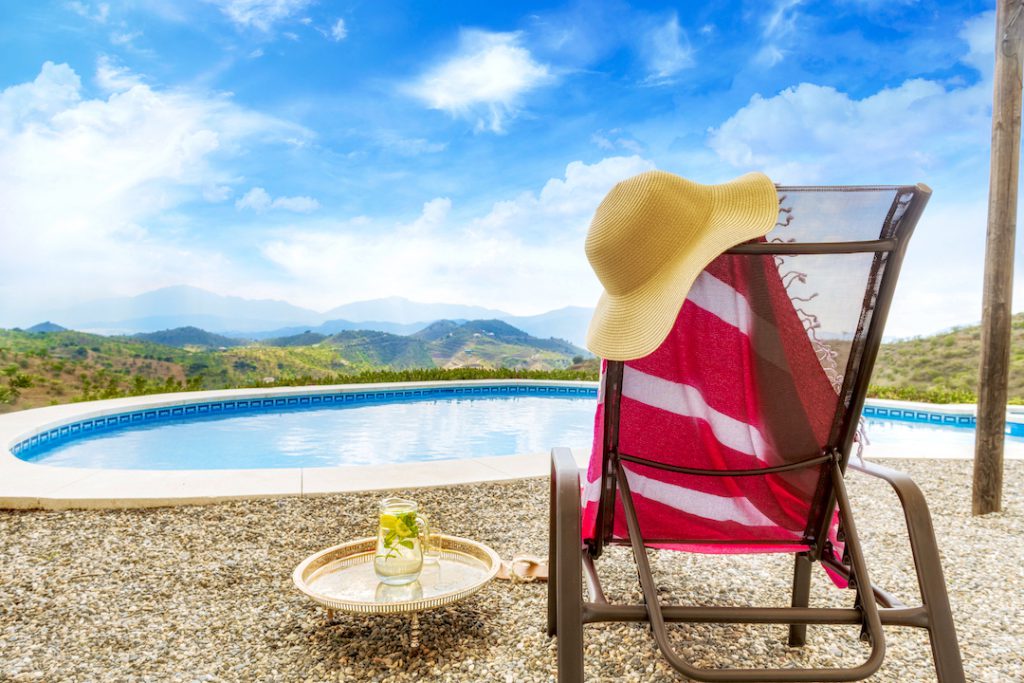
How does that look for you to watch the total solar eclipse from the pool?
You won’t be bothered by buildings or tall trees getting in the way here. You can see from the photos that the area around Finca Las Nuevas is a good spot.
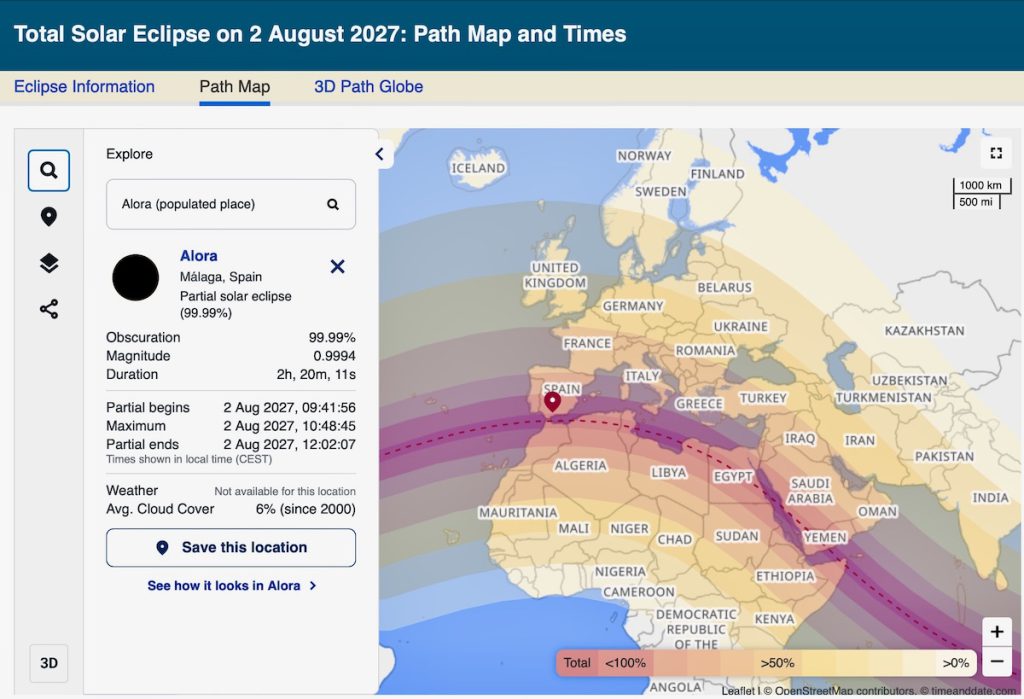
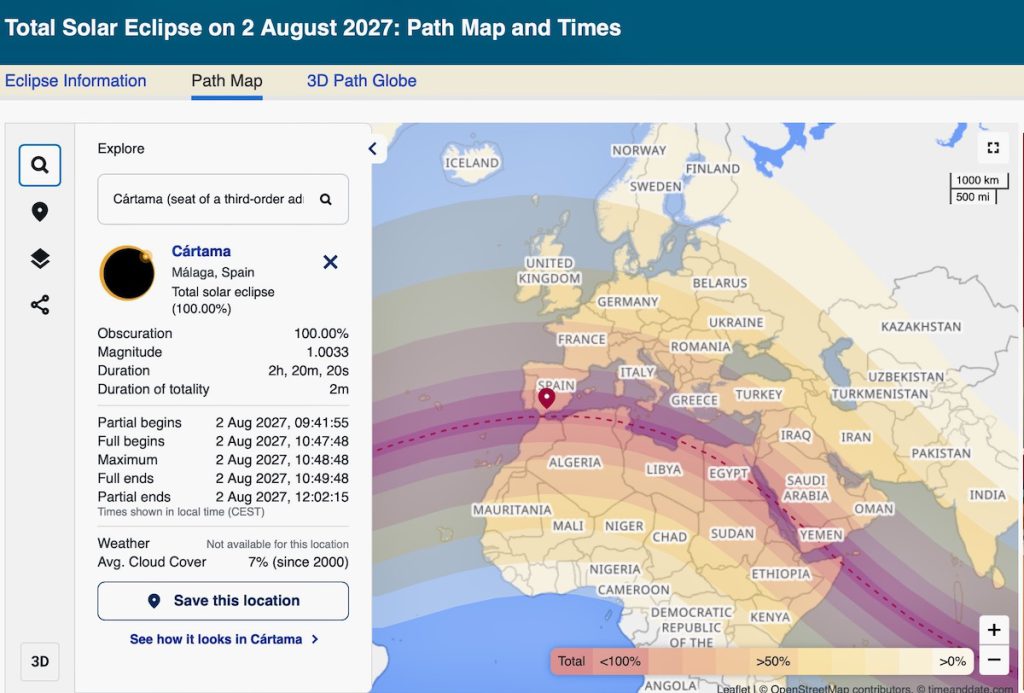
On this website, you can enter your location to see exactly when the total solar eclipse starts, when it is at its maximum and what time it ends.
What is a total solar eclipse?
A total solar eclipse only occurs during a new moon. That is when the moon is exactly between the sun and the earth. During a total solar eclipse, the corona, the gas cloud around the sun, becomes visible.
The moon blocks the sun’s rays, making the sun invisible from Earth for a short time. This can sometimes last up to seven minutes. A total solar eclipse is quite close because the moon has to slide at exactly the right angle between the sun and the earth, and in addition, the viewer has to be in the right place. This is why they sometimes say that a person experiences a maximum of one total solar eclipse in their lifetime.
To get an idea of what the total solar eclipse looks like at Finca Las Nuevas? Check this link.
Tips for watching the total solar eclipse
Tip 1: right time
Check out the website above or another website to make sure you have the starting time of the total solar eclipse correct.
Tip 2: Make sure you have eclipse glasses
To enjoy the total solar eclipse, wear eclipse glasses. Eclipse glasses protect your eyes and enable you to experience this spectacular natural phenomenon safely.
If you have not been able to buy eclipse glasses, check this safe option to watch the total solar eclipse.
Take a colander and hold it perpendicular to the direction towards the sun. Then lay a large sheet of white paper on the ground. The paper will normally show dozens of round specks of light, but during the eclipse, they will all be crescents: a clear representation of the shape of the eclipsed sun.
Or if you have welding goggles with at least factor 14, you can put those on too.
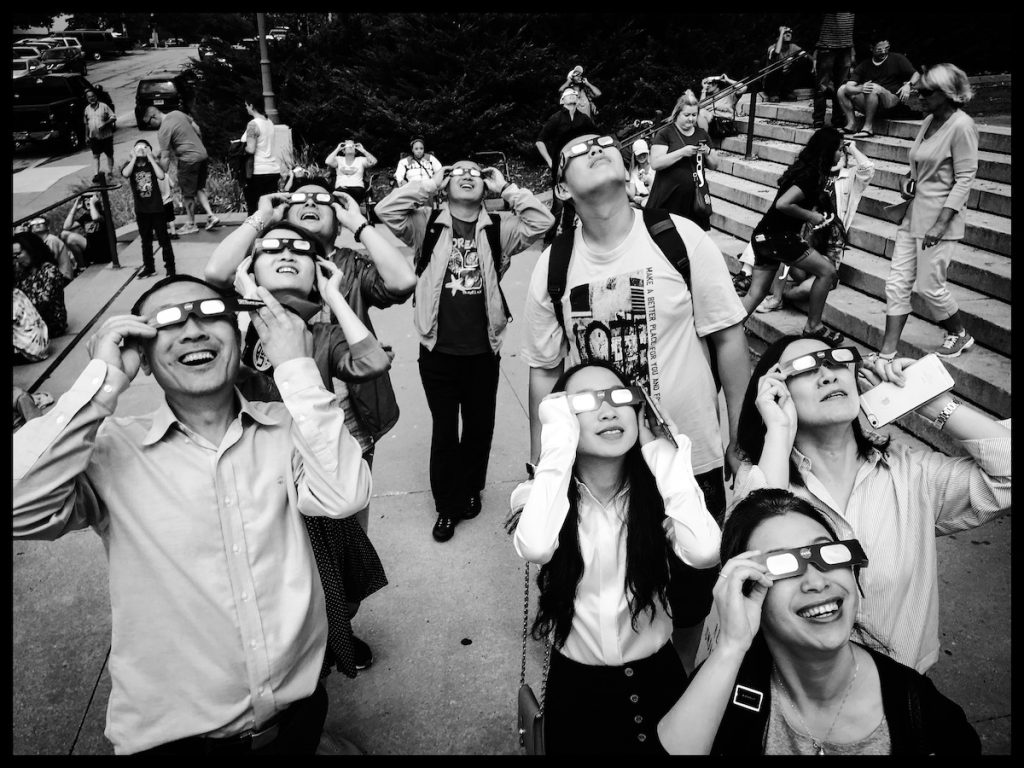
Tip 3: Equipment
If you want to capture an eclipse, make sure you have a good camera and a sturdy tripod. Don’t forget to use a solar filter, welding lens No. 14 or a strong grey filter on your lens. Never look through your viewfinder, but use your live view! Infrared radiation is not blocked with the use of these filters and can seriously damage your eyes.
For a better view, use binoculars or telescopes with appropriate sun filters.
Do not leave your camera pointed directly at the sun for too long. The camera gets very hot and can be damaged. Therefore, regularly turn the camera away from the sun or put a cloth over it.
Photographing a total solar eclipse
Since you can’t experience a total solar eclipse every day, you might want to capture such a special natural phenomenon on camera. Here are some tips from Chatgpt on how best to capture that solar eclipse.
Don’t forget to take some test shots of the sun beforehand, so that at the right moment you are fully practised and know exactly which camera settings to use.
Equipment needed
1. Camera: A DSLR, mirrorless camera, or a good digital compact camera.
2. Telephoto lens: A lens with a focal length of at least 200 mm, but ideally 400 mm or more.
3. Tripod: For stability while shooting.
4. Solar filter: A special solar filter for your lens to protect the sensor and your eyes from the sun’s bright rays.
5. Remote control or intervalometer: To minimise camera shake when taking photos.
6. Spare batteries and memory cards: So that you have enough storage and battery life.
Preparation
1. Find the location: Make sure you are in a place where the total solar eclipse will be fully visible. Check the eclipse route and timing. So that’s with us: Finca Las Nuevas in Álora!
2. Use a solar filter: Place the solar filter on your lens for safety.
3. Set your camera: Use manual settings for best control:
ISO: Low (ISO 100 or 200) to minimise noise.
Aperture: f/8 to f/16 for good sharpness.
Shutter speed: Varies depending on the phase of the eclipse; start with 1/1000 second and adjust as needed.
4. Focus: Manually focus on the sun before the eclipse begins.
Photographing the Solar Eclipse
1. Initial phase (partial eclipse): Photograph the initial phase with the solar filter on your lens. Use short shutter speeds (1/1000 to 1/5000 second).
2. Totality: During totality, you can remove the solar filter. The sun’s corona is visible and you can use slower shutter speeds (1/4 to 2 seconds). Experiment with different settings to capture the details of the corona.
3. After totality: Put the solar filter back on your lens and go back to faster shutter speeds.
A fine stay to watch the total solar eclipse in Andalusia
Finca Las Nuevas is located in the mountains near Álora and Cártama, 40 minutes from Málaga, the airport and the sea. Our attractive and spacious holiday homes are located on an old olive farm. From our little mountain, you have a wonderful view of the total solar eclipse. Would you like to book your accommodation in advance? Send us a message!
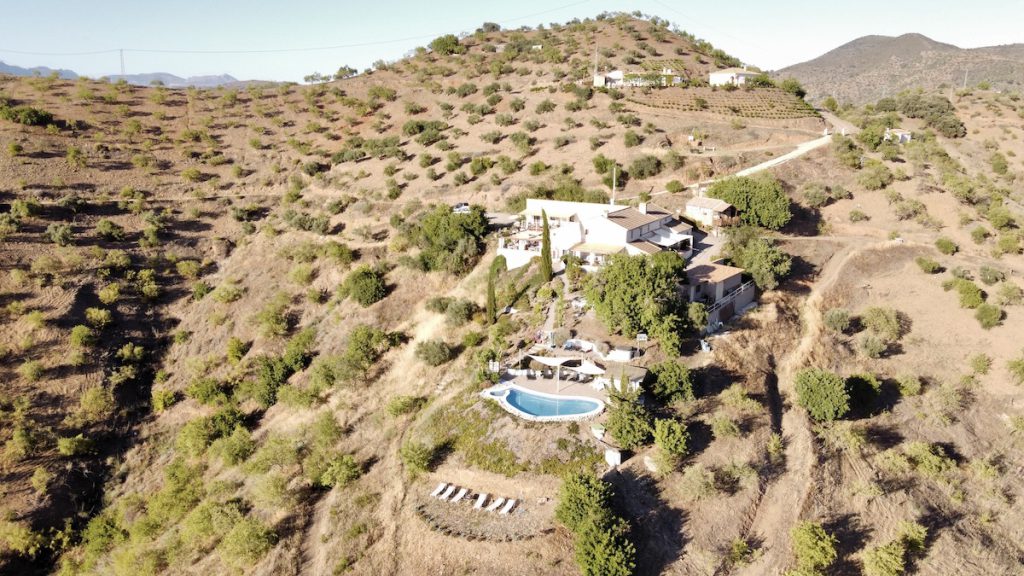

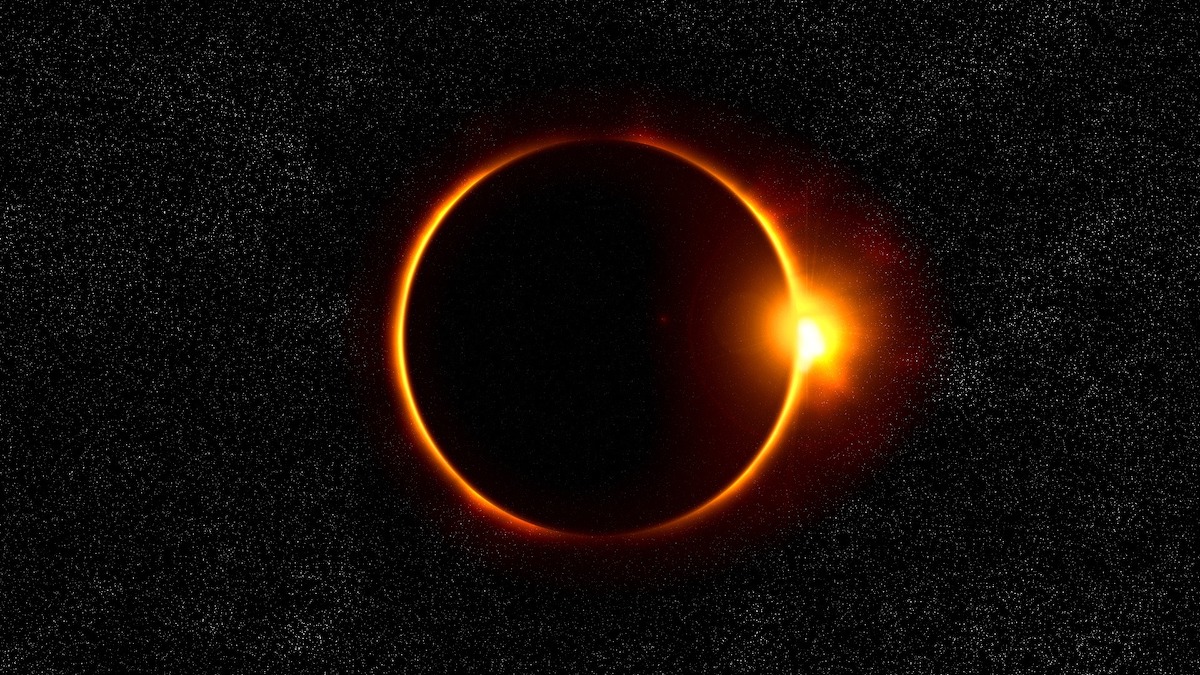
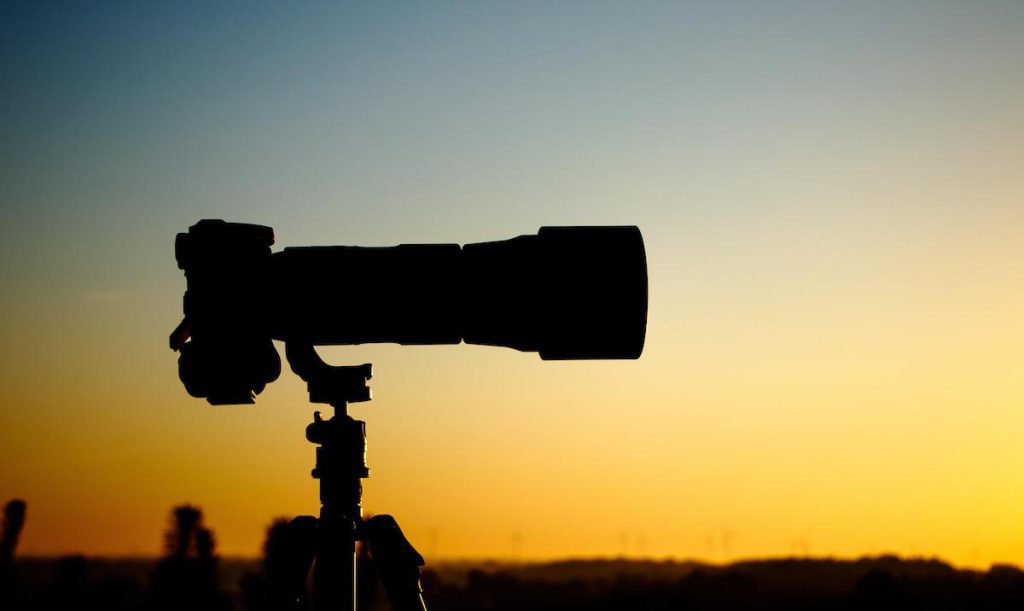
0 Comments